Effortless Backpacking: How to Pack a Tent in a Backpack
Knowing how to pack a tent in a backpack is a backpacker’s essential skill. It ensures comfort, efficient use of space, and easy access to gear. Remember to consider the impact of intelligent tent packing on your outdoor adventures.
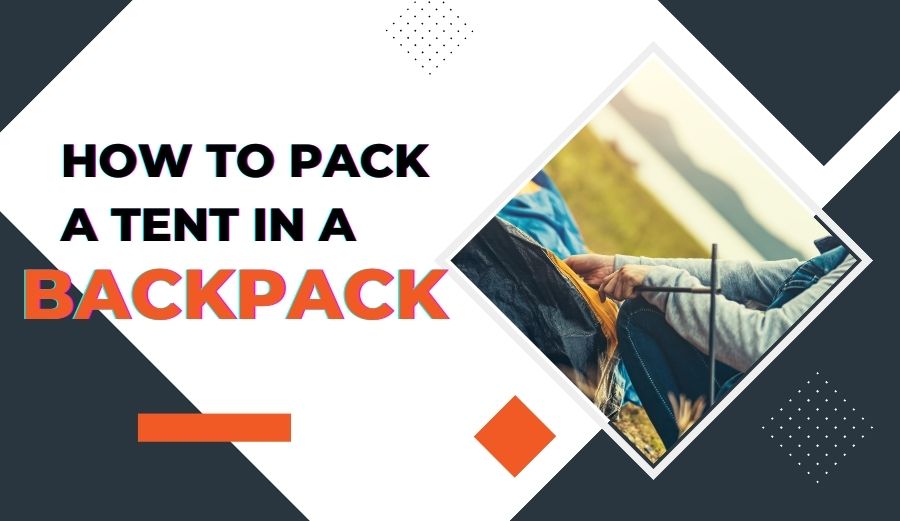
Are you ready to elevate your backpacking game and leave the competition in the dust? Look no further. When it comes to how to pack a tent in a backpack, it’s not just about tossing it in and hitting the trail. It’s about strategic packing that ensures seamless adventures.
Our comprehensive guide isn’t your run-of-the-mill advice; it’s a game-changer. We’re not here to follow the trends but to set them. Our goal? To provide exclusive insights that make you an expert in tent packing and dominate Google’s search results.
Ready to stand out and engage with us personally? Let’s conquer the backpacking world together!
Table of Contents
ToggleThe Art of Efficient Tent Packing: Unveiling Pro Techniques
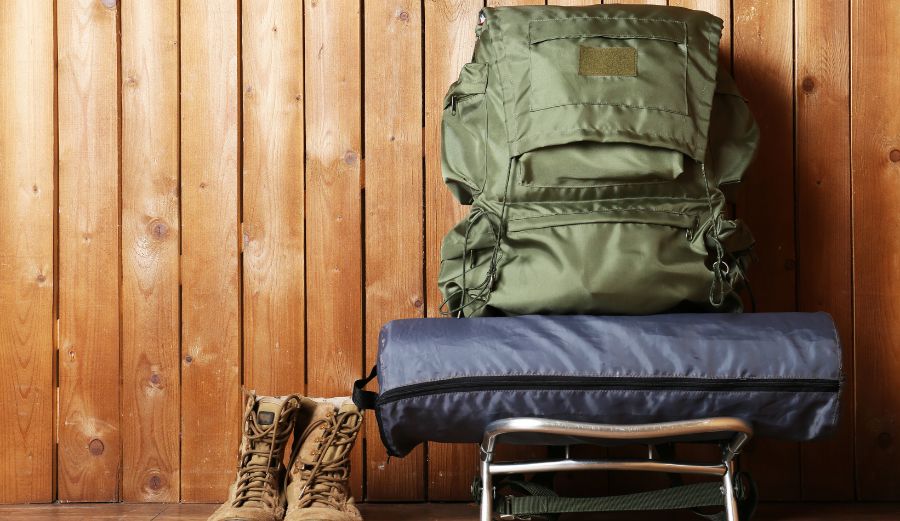
Significance of Tent Packing for Comfort and Strain Prevention:
Picture this: It’s been a day of hiking under the scorching sun, and you’re ready to call it a night. Your backpack is filled with essential gear, your boots are caked with mud, and your tent is the only thing standing between you and a restful night’s sleep. But here’s the catch: how you’ve packed that tent can make you feel like you’re sleeping on a cloud or, more like, a pile of rocks.
That’s why understanding the importance of proper tent packing is essential. When your tent is neatly packed, you’ll enjoy a comfortable night’s rest, free from annoying twinges and aches resulting from sleeping on uneven terrain or in an awkward position. Trust me; your back will thank you.
Advanced Techniques Await:
But this guide isn’t just about the basics; it’s about unveiling advanced techniques that will elevate your tent packing skills to a new level. We’re discussing strategies that will ensure a cozy night’s sleep and help you prevent persistent aches and strains that can damage your adventure.
We’re going beyond the norm here. While others might focus solely on the “how-to,” we’re diving deep into the “why” and “why it matters.” As a seasoned backpacker, I’ve learned there’s more to tent packing than meets the eye. So, join me on this journey as we explore the secrets of efficient tent packing, and get ready to take your backpacking game up a notch.
Mastering Tent-Packing Methods: Internal vs. External Frame Backpacks
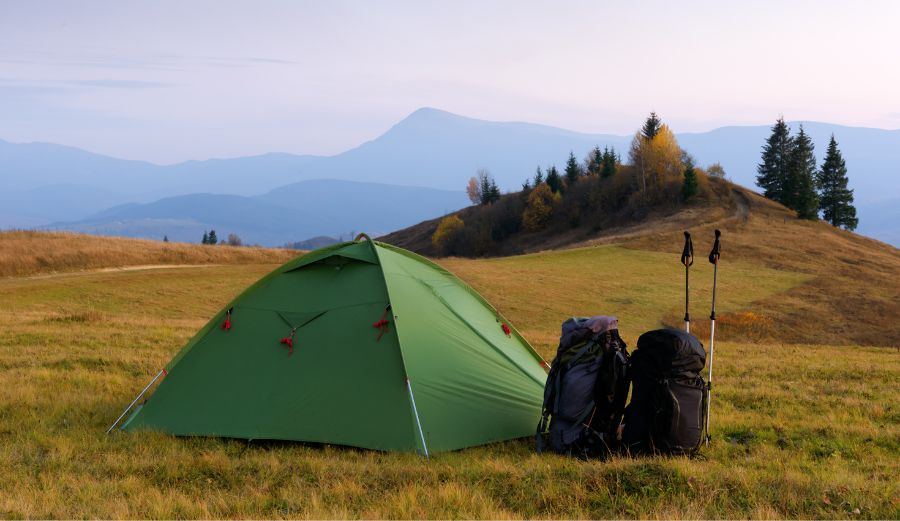
Alright, fellow adventurers, let’s get into the nitty-gritty of backpacking and tent packing by examining your backpack’s crucial element. More specifically, we will explore the differences between two common types of bags – internal frame and external frame – and understand how each impacts the art of tent packing.
Internal vs. External Frame Backpacks: The Basics
To start, let’s differentiate between these two backpack styles.
Internal Frame Backpacks:
Advantages of Using Internal Frame Backpacks:
- Better Weight Distribution: Internal frame backpacks are designed to sit closer to your body, offering improved weight distribution. This means the load – including your tent – is centered and balanced, reducing the strain on your back and making your hike more comfortable.
- Streamlined Design: Internal frame packs often have a sleeker, more streamlined design. This can be advantageous when navigating through tight spaces, dense foliage, or scrambling up rocky terrain.
- Versatility: They are versatile and ideal for various terrains and activities, making them popular among backpackers and hikers. You can confidently pack your tent inside without worrying about losing your balance.
External Frame Backpacks:
Challenges and Considerations when Using External Frame Backpacks:
- Limited Weight Distribution: External frame backpacks tend to place the weight further away from your body. While this design is excellent for carrying larger, bulky items like tents or sleeping bags, it can make the load feel less stable and more cumbersome, affecting your balance.
- Awkward Shape: These packs often have a more rigid and bulkier shape due to their external frames. This can be challenging when navigating narrow trails or squeezing through tight spaces.
- Potential Snags: The external frame can snag on branches, rocks, or other obstacles, potentially causing damage to your gear, including your tent.
- Unique Attachment Considerations: If you plan to attach your tent to the exterior of your backpack, external frame packs may offer more options for securing it. However, this also means your tent is exposed to the elements and risks getting wet in rainy conditions.
Now that the basics of internal vs. external frame backpacks, you can better assess which type suits your style and tent-packing needs. Remember, the right significantly plays a significant role in your overall comfort and ease on the trail.
The Six Essential Steps to Flawless Tent Packing
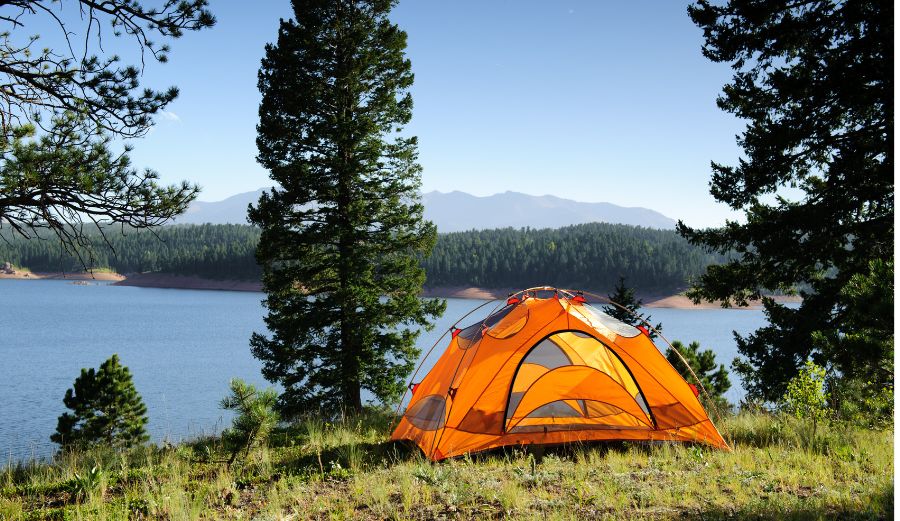
Now that we’ve delved into the intricacies of backpack types let’s turn our attention to the main event: packing your tent flawlessly into your backpack.
This section will guide you, breaking the process into six essential steps. Each step will be explained in detail, complete with clear instructions and, where needed, visual aids to ensure you become a tent-packing pro.
Step 1: Choosing the Right Backpack with an Internal Frame
Before we even dive into tent packing, having the right backpack is crucial. Opt for one with an internal frame. Why? Internal frame backpacks offer better weight distribution, ensuring your load – including your tent – is centered and balanced.
This design reduces the strain on your back, making your hike far more comfortable. If you haven’t already invested in one, consider it the first step towards pain-free backpacking.
Step 2: Ensuring the Tent is Dry and Properly Prepared for Packing
Here’s a cardinal rule of tent packing: never, ever pack a wet tent. Why? Because it’s a surefire way to turn your backpack into a breeding ground for mold and mildew.
So, before you even think about packing, ensure your tent is bone-dry. If unsure, set it up in your backyard or a sunny spot to air-dry. A dry tent weighs less and provides a more pleasant camping experience.
Step 3: Rolling the Tent Tightly and Secure it with Poles
Now that your tent is dry and ready, it’s time to start packing. Begin by laying your tent flat on a clean surface. Keep the tent poles in their designated bag and place them alongside the tent. Adjust the tent’s width to match that of the tent pole bag.
Here’s where it gets interesting – start rolling up the tent and the bag together, creating a tight “burrito.” Use the poles to keep the roll tight, ensuring everything stays in line. You don’t want those tent poles poking out or the tent sagging – a tight registration is the key.
Step 4: Packing the Rolled Tent into the Tent Bag with Support from Poles and Pegs
With your tent tightly rolled, it’s time to tuck it into the bag. The clever part is that the poles and pegs you stashed alongside the tent serve a dual purpose. They help keep everything compact and provide central support, preventing your tent from shifting around during your hike.
Step 5: Organizing the Backpack, Placing Heavier Items at the Bottom
Before you load up your backpack with your neatly packed tent, consider this golden rule of backpacking: place the heavier items at the bottom. This strategy ensures that your center of gravity remains low, keeping you stable on the trail. So, stash those heavier items, like food or cookware, towards the bottom of your backpack.
Step 6: Strategically Place the Tent in the Middle of the Backpack for Optimal Weight Balance
Finally, it’s time to position your tent inside the backpack. Aim for the middle section; this minimizes strain on your back since your tent is one of the heftier items. Your sleeping bag should be right at the bottom of the pack, with your tent just above it.
Here’s a pro tip:
You can choose to pack your tent vertically or horizontally. A vertical position makes for easy removal when unpacking. At the same time, a horizontal placement allows you to stack other items on top of the tent. Go with whichever feels most comfortable for you.
Beyond Basics: Expert Tips for Ultimate Tent Packing
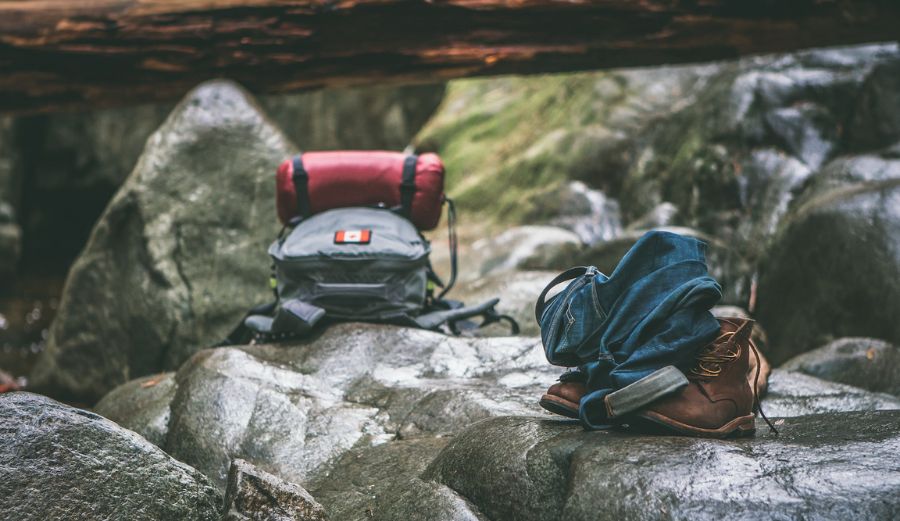
Congratulations, you’ve mastered the fundamental steps of tent packing. Now, it’s time to elevate your tent-packing game with some expert tips and innovative strategies. In this section, we’ll delve into advanced techniques to enhance your tent-packing proficiency and ensure your backpacking adventures are nothing short of extraordinary.
1. Splitting Tent Components for Better Load Distribution
Have you ever considered sharing the load with your backpacking partner? It’s a game-changer. If you’re hiking with a companion and plan to sleep in the same tent, why not split the tent components between you? One person can carry the tent body and rainfly, while the other shoulders the poles and stakes.
This innovative division lightens the load for each of you and promotes better balance and maneuverability on the trail. Plus, if one of you gets separated from the group or faces unexpected challenges, you both have essential shelter components.
2. Going Minimalist: Packing Without a Stuff Sack
Now, let’s talk about ultralight hiking and minimalist backpacking. If you’re one of those adventurers who prefer shedding every extra ounce and going as light as possible, consider skipping the stuff sack for your tent. Instead, let it roam free within your backpack.
This approach is ideal for those with small, streamlined packs. Your tent will likely fit perfectly between your other hiking and backpacking essentials. But remember, if you go this route, securely tie your tent poles to the outside of your backpack for easy access.
3. Handling Wet Tents: Drying Techniques and Careful Storage
Sometimes, nature has other plans, and you pack a damp or wet tent. No worries, we’ve got you covered. First and foremost, make every effort to dry your tent as much as possible before packing. Even a few minutes of letting it air out can make a significant difference.
If you’re dealing with a persistently wet tent, here’s a trick: pitch it in your backyard or a sunny spot for a quick dry before stowing it in your backpack. And remember, when you get home, ensure the tent fully dries out before storing it. Regardless of the weather during your trip, you should always do this to prevent any lingering moisture from causing mold or mildew.
Elevating Your Packing Game: Attaching a Tent to Your Backpack
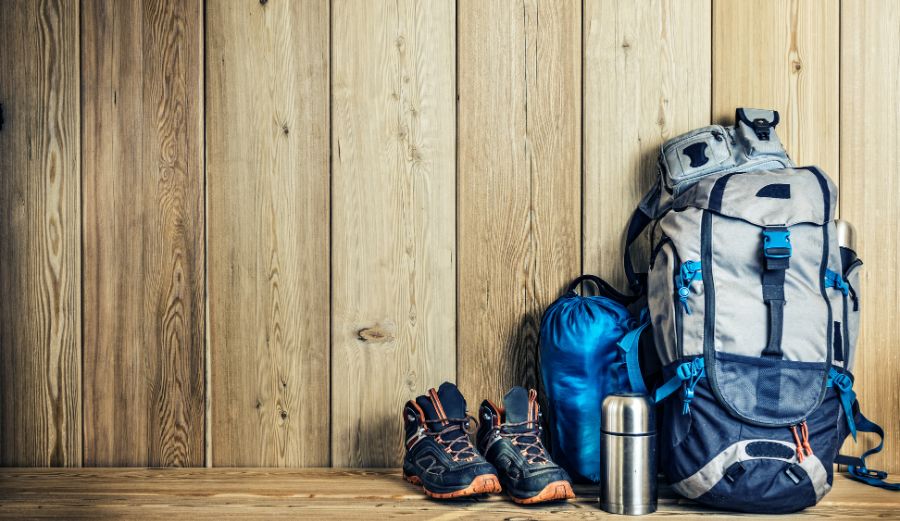
Welcome to a whole new dimension of tent packing – the art of attaching your tent to the exterior of your backpack. This section will explore this innovative option to free up valuable interior space, optimize your packing strategy, and enhance your overall backpacking experience. But as with any technique, there are pros and cons, and we’ll discuss them in detail, ensuring you’re well-prepared for this backpacking adventure.
Exploring the Option: Attaching a Tent to the Exterior of Your Backpack
The idea is simple yet brilliant. Securing your tent to the outside of your backpack gives you precious room inside for other gear and essentials. This external attachment can be a game-changer for hikers with more miniature packs or those carrying many items. But, as with any strategy, weighing the advantages and disadvantages is essential.
Pros of Attaching a Tent Externally:
- Space Optimization: By moving your tent outside, you maximize the internal capacity of your backpack. This extra room can be a lifesaver, especially on extended trips where every inch counts.
- Accessibility: Need to set up camp quickly? When your tent is on the outside, you can access it without rummaging through your backpack’s contents. This convenience is particularly valuable when weather conditions turn unpredictable.
Cons and Potential Risks:
- Snagging Hazards: The tent’s exposed position can make it vulnerable to snagging on tree branches, rocks, or other obstacles along the trail. This risk can damage your gear or even accidents if you need to be careful.
- Weather Exposure: Depending on how and where you attach your tent, it may be exposed to the elements. Rain can soak your gear, compromising your comfort during your backpacking trip.
Recommendations for Secure Attachment:
- Utilize Compression Straps: Most modern backpacks have compression straps and attachment points. Use these to secure your tent tightly to your bag. This will minimize any movement and reduce the risk of snagging.
- Waterproofing is Key: Invest in a waterproof stuff sack or storage sack for your tent. Even if you’re confident in the weather, it’s a safety net to protect your tent from unexpected rain or moisture.
- Experiment with Placement: Finding the ideal position for your tent is crucial. Many backpackers attach it to the bottom of the outside, similar to securing a closed-cell foam sleeping pad. Others prefer the top, near the lid opening, for easy access. Some even attach their tent vertically to the middle of the outside of their backpack – a great option if your backpack has straps designed for this purpose.
With the proper precautions and thoughtful attachment, you can enjoy the benefits of external tent packing without compromising safety or risking damage to your gear.
Pioneering Backpacking Shelters: Beyond Tents
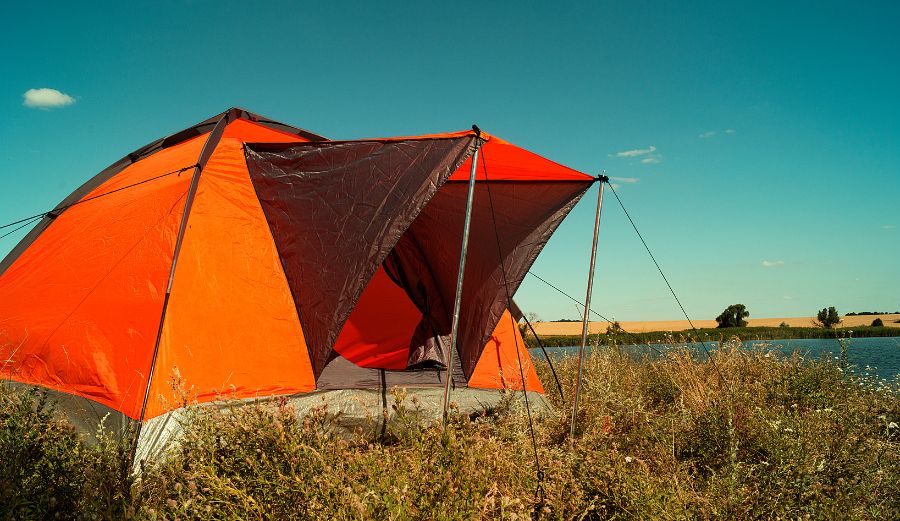
While tents are the go-to for many backpackers, it’s time to broaden your horizons and explore alternative backpacking shelters. This section will introduce you to innovative options like hammocks, bivy sacks, and tarp shelters, each with unique advantages.
These alternatives offer lightweight and compact designs that can revolutionize your backpacking experience, allowing you to choose the perfect shelter based on your location and personal preferences.
Exploring Alternative Shelters: A World Beyond Tents
- Hammocks: If you’ve ever dreamt of sleeping suspended in the trees, a backpacking hammock is your ticket to adventure. These hammocks are super lightweight and pack down tiny because you don’t need tent poles. The catch? You’ll require robust trees spaced adequately apart to set up your hammock. The Hennessey Explorer Deluxe, for instance, comes with an effective rainfly, making it an excellent choice for your Pacific Northwest adventures.
- Bivy Sacks: For the minimalist backpacker seeking simplicity and a lightweight setup, Bivy Sacks is the answer. These compact shelters offer protection from the elements while reducing your pack weight significantly. Ideal for solo backpackers, bivy sacks are designed for those who prefer to sleep under the stars but want a reliable shield from rain and insects.
- Tarp Shelters: Tarp shelters serve as the versatile multitools of backpacking shelters. They’re versatile, adaptable, and incredibly lightweight. With a tarp and creativity, you can fashion various shelter configurations to suit your needs, whether a basic A-frame or a more elaborate setup. Tarps are especially popular among ultralight hikers who prize versatility and minimalism.
Advantages of These Alternatives:
- Lightweight: All these alternatives are significantly lighter than traditional tents, making your backpacking experience more enjoyable as you cover miles with less strain.
- Compact Design: Their smaller packed size means more room in your backpack for other essentials, allowing you to carry additional gear or reduce your load.
- Location Freedom: You can adapt to different terrains and environments depending on your chosen shelter. Hammocks require trees, bivy sacks work almost anywhere, and tarps give you flexibility like no other shelter.
Choosing the Right Shelter: Location and Preferences
Selecting the perfect backpacking shelter involves two key factors: your location and personal preferences. Consider the terrain, climate, and weather conditions of your chosen destination. Are you trekking through forests with ample trees for hammocks, or will you be in open terrain where a tarp shelter offers more flexibility?
Additionally, your preferences play a significant role. Some backpackers adore the coziness of a hammock, while others cherish the simplicity of a bivy sack. Whatever your choice, these alternatives offer exciting possibilities for your backpacking journeys beyond the traditional tent.
Optimizing Your Backpack Packing: Smart Strategies for Every Zone
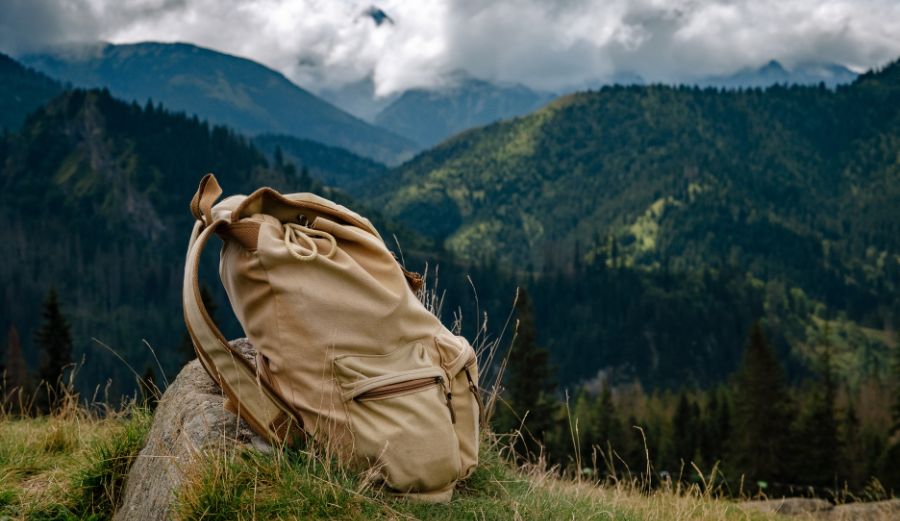
Efficient packing is the cornerstone of a successful backpacking adventure. In this section, we’ll dive into intelligent strategies for packing different zones of your backpack. Whether it’s the bottom, middle, top, or pockets, we’ll provide practical advice to ensure you maximize your available space while maintaining accessibility to essential gear.
Packing the Bottom: Stash Your Camp Essentials
The bottom zone of your backpack is where you should pack gear you only need once you set up camp. This typically includes:
- Camp Shoes: Lightweight and comfortable footwear for relaxing around your campsite.
- Sleeping Clothes: Make your sleeping attire accessible for a cozy night’s rest.
- Inflatable Sleeping Pad: Place it at the bottom to provide cushioning and insulation.
Some backpacks even come with a designated bottom compartment for your sleeping bag, allowing easy access without disturbing the rest of your gear.
Middle Zone: Heavy Items and Tent Packing
This is the heart of your backpack, where you’ll want to pack heavier items and your tent. Here’s a breakdown:
- Entire Tent: Pack your whole tent here if you use an internal frame backpack. If it’s an external frame, you’d want to keep the tent body and rainfly in this zone.
- Bear Canister: With food inside, your bear can fit snugly in this zone.
- Backpacking Stove: For convenient cooking, store your stove and cookware here.
Top Zone: Quick Access Essentials
The top of your backpack is ideal for items you’ll need on the trail during the day. Keep these essentials here:
- Water Filter: Easily accessible for hydration stops.
- First-Aid Kit: Quick access to essential medical supplies.
- Rain Jacket: Weather can be unpredictable; having your rain jacket at the top ensures you’re ready for anything.
- Toilet Kit: Include personal hygiene items for easy access when nature calls.
Pockets: Organizing Small Essentials
Backpack pockets are your allies in staying organized and accessing small items without rummaging through your main compartment. Here’s what to put in your pockets:
- Secure Pocket: For valuables like your phone and wallet. Some backpacks have built-in key clips for your keys.
- Exterior Pockets: Use these for your GPS/satellite communicator, sunglasses, sunscreen, bug spray, and headlamps.
- Small Items: Lip balm, paper maps, compass, and other minor essentials can be found here.
- Water: Always carry your water bottles or hydration reservoirs that are easy to reach.
Emphasizing Balance and Accessibility
The key to adequate packing is fitting everything, balance, and accessibility. Place the heaviest items near your back and center in your backpack. This positioning minimizes strain on your back and helps maintain your balance on the trail.
Ensure your backpack is evenly distributed so it doesn’t pull you backward or cause discomfort during your hike. Additionally, organizing your gear by zones and accessibility ensures you can quickly locate and access what you need without disrupting your entire pack.
With these strategies, you can optimize your backpack packing, making every backpacking adventure a seamless and enjoyable experience.
Wrap Up: Your Backpacking Journey Starts Here
Congratulations! You’ve embarked on a journey through the art of expertly packing a tent in your backpack. Here’s a quick recap of the key takeaways from this comprehensive guide:
- Packing Proficiency: Proper tent packing is paramount for a seamless backpacking adventure, ensuring comfort and preventing strains.
- Internal vs. External Frame Backpacks: We explored the differences between these two types, highlighting the advantages of internal frame backpacks, such as better weight distribution, while discussing unique considerations for external frames.
- Six Essential Steps: The six-step process for flawless tent packing covers everything from choosing the right backpack to strategically placing your tent for optimal weight balance.
- Expert Tips: We dived into advanced strategies, including splitting tent components between partners and options for minimalist hikers, while addressing the challenges of packing wet tents.
- Attaching a Tent: Exploring the option of attaching a tent to your backpack with a balanced look at the pros, cons, and recommendations for secure attachment.
- Alternative Shelters: We introduced you to alternative backpacking shelters like hammocks, bivy sacks, and tarp shelters, each offering unique advantages for different outdoor experiences.
- Smart Packing Strategies: Detailed advice on packing different zones of your backpack, emphasizing balance and accessibility for a well-organized load.
Now, it’s time to put these expert techniques into action. Implement these strategies for your next backpacking trip, and you’ll find yourself on the path to an exceptional outdoor experience. Remember, the journey is as important as the destination, and with the proper knowledge, your backpacking adventure starts here.
Thank you for joining us on this enlightening expedition into tent packing. Safe travels and happy backpacking!
